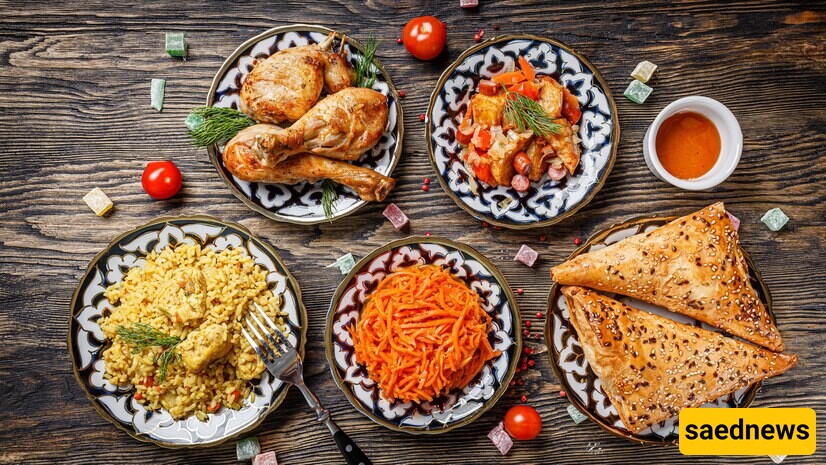SAEDNEWS: From pizza to sushi, the world’s favorite foods have fascinating origins rooted in culture and history. Discover the stories behind these iconic dishes and how they became global sensations.

Food is more than sustenance; it reflects history, geography, and culture. Many of the world’s most beloved dishes originated from humble beginnings, eventually crossing borders to become global phenomena. Here, we delve into the origins of some of the most famous foods and the stories that brought them to our plates.

Pizza, often regarded as the ultimate comfort food, originated in Naples, Italy. In the 18th century, Neapolitans topped flatbread with tomatoes, cheese, and herbs, creating the foundation of modern pizza. The iconic Margherita pizza, named after Queen Margherita of Savoy, featured the colors of the Italian flag: red tomatoes, white mozzarella, and green basil.
Today, pizza is enjoyed worldwide, with variations ranging from deep-dish in Chicago to thin-crust New York-style pies.

Sushi traces its origins back to Southeast Asia, where fermented rice was used to preserve fish. This technique evolved in Japan during the Edo period, where fresh fish and vinegared rice became staples of the dish. Sushi, once a street food, transformed into a culinary art form showcasing precision and quality ingredients.
From traditional nigiri to modern sushi rolls, this Japanese delicacy has become a global favorite, celebrated for its simplicity and elegance.

Chocolate’s story begins with the ancient Mesoamerican civilizations of the Mayans and Aztecs. They cultivated cacao and consumed it as a bitter, spiced beverage, often reserved for royalty and rituals. After its introduction to Europe in the 16th century, cacao was sweetened and transformed into the chocolate we know today.
Modern chocolate, from artisanal bars to mass-produced candy, owes its roots to these ancient cultures and their appreciation for the cacao bean.

Tacos, a cornerstone of Mexican cuisine, have a history dating back to indigenous cultures. Early tacos were simple combinations of corn tortillas with fillings like beans, fish, or chiles. During the colonial period, European influences introduced new ingredients like pork and beef.
Today, tacos range from street food to gourmet creations, with countless regional variations showcasing Mexico’s culinary diversity.

The buttery, flaky croissant, synonymous with French patisseries, actually has Austrian origins. The crescent-shaped pastry was inspired by the Austrian kipferl, which arrived in France during the 17th century. French bakers adapted the recipe, incorporating puff pastry techniques to create the croissant’s signature layers.
Now a breakfast staple worldwide, the croissant is a testament to culinary cross-cultural exchange.

Curry, a dish synonymous with Indian cuisine, is a product of centuries of trade and cultural exchange. Indian cooks developed rich spice blends to create complex, flavorful dishes. During British colonial rule, curry was introduced to Europe, where it gained immense popularity.
Today, curry has countless regional adaptations, from Thai green curry to Japanese katsu curry, showcasing its global appeal and versatility.

The cheeseburger, an emblem of American fast food, emerged in the early 20th century. Its invention is often attributed to Lionel Sternberger, who reportedly added cheese to a hamburger at his father’s Pasadena, California, restaurant.
From backyard grills to global chains like McDonald’s, the cheeseburger has evolved into a culinary symbol of indulgence and convenience.

While pasta is deeply associated with Italian cuisine, its origins may lie in ancient China, where early forms of noodles were made from millet. Marco Polo is often credited with bringing pasta to Italy, but evidence suggests that Italians were already making pasta from durum wheat long before his travels.
Pasta has since become a versatile dish, with hundreds of shapes and sauces that reflect Italy’s regional diversity.
The origins of famous foods reveal the interconnectedness of cultures and the creativity of human culinary traditions. These dishes, rooted in specific histories, have transcended borders to become shared global treasures. As we enjoy these iconic meals, we celebrate not only their flavors but the rich stories they carry

